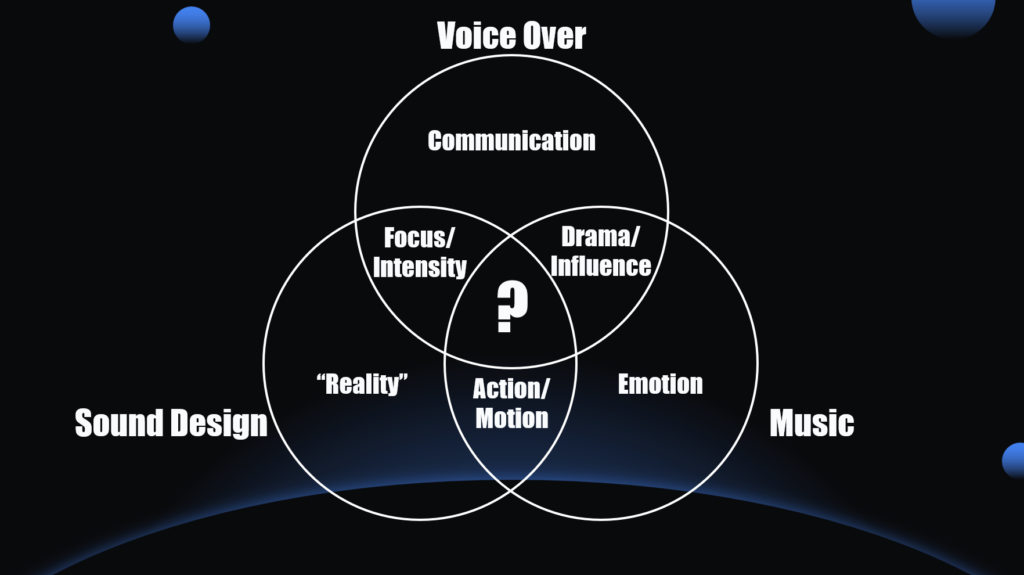Picking up from yesterday’s blog where we discussed part of my presentation on high level audio concepts in game audio. I got into a little bit of what each part of game audio can be utilized for on their own, and today we will explore more high level thoughts on how combining the elements can be utilized. Here’s a graphic to help demonstrate…

Voice Over + Music = Drama/Influence
Utilizing and focusing on these 2 elements can really help carry the player’s experience in terms of drama. Scenes or even just moments of dialog can really become more effective with the a good corresponding music piece behind it. It goes back to something I’ve mentioned before, where no two people’s interpretation of anything is ever exactly the same (maybe I should do a longer blog post about that?)
By adding music it can allow the player to potentially feel how a game is trying to depict a character’s emotion without them verbally saying what it is. Using these tools together can often be an effective way to influence how a game is persuading the player to feel a certain way.
Music + Sound Design = Action/Motion
Adding emotion (music) to reality (sound design) can intensify what actions are happening on screen. Whether it be a combat scene, or a character tidying their bedroom, or anything in between, by adding some music it will not only allow a scene without dialog to flow a little better, it can also intensify the actions.
Voice Over + Sound Design = Focus/Intensity
By only having sound design and voice over the dialog can nearly inhabit the actions/reality themselves. If a character is swinging a sword while vowing vengeance both the words and the sword swing become the focus of the moment imbuing that sword swing with more importance than just a sword swing on it’s own. This can also be utilized in a way to allow the player to focus on the action that the voice over is trying to communicate. The player is controlling the action, and the voice over is reinforcing what that action is accomplishing beyond the visuals.
More to come in a potential part 3 where I describe the “?” in the middle, and how you can use this diagram to help breakdown how audio is working on other games and media.